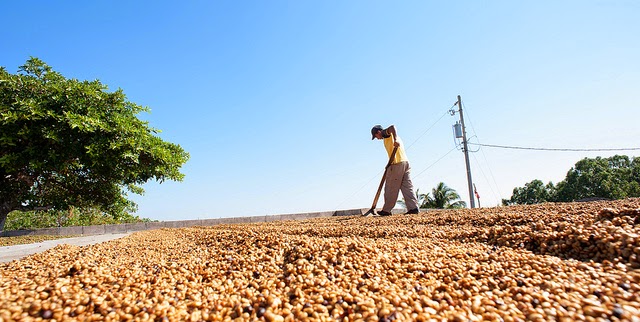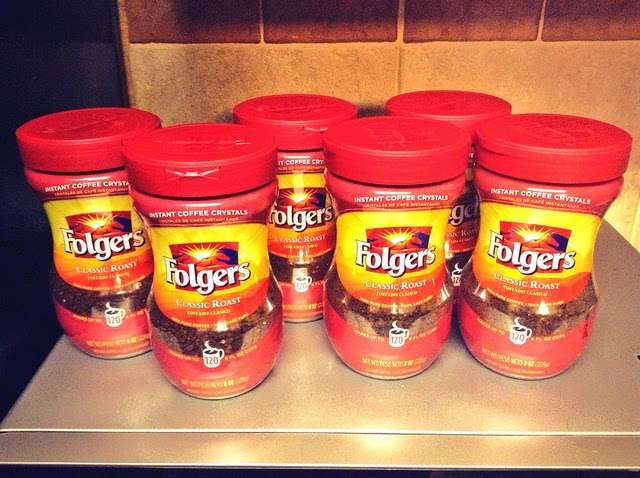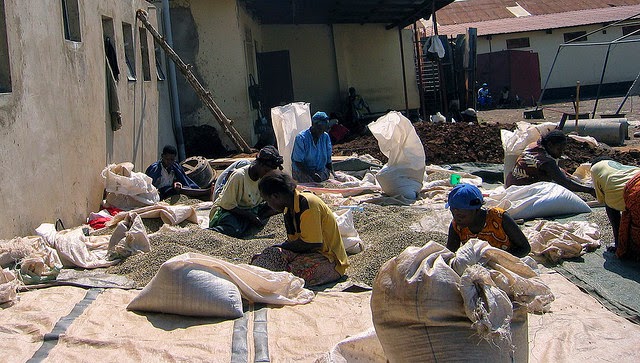So we've looked at how to get the bean out of the fruit, but once you have it, what do you do with it? The answer is not to grind and brew, or even roast. Those beans have a ways to go, and before they can even be shipped, they have to be dried to a low moisture content, because moisture, rot and bacteria are like a group of young hooligans that are always hanging out together. The beans are usually dried in beds outside, where they are shifted frequently to speed the process and prevent mold.
(Photo by skinnydiver is licensed under CC BY-SA 2.0)
The process is also done partially or entirely by machine on some farms. It is important that the process is done properly, neither too quick nor too slow. If it's down too quickly, it risks damage to the beans, while if it's done too slowly unpleasantness may set in via rot or fermentation. Either way, you get some pretty nasty coffee.
After the coffee has been dried, there's still the parchment around the bean, which is removed by dry milling. Some producers delay milling and let the beans rest with the parchment intact for a few months, which increases the shelf-life of the green beans. Once the beans are milled they must be sorted by density and color to insure consistency within batches. For a roaster, this means he doesn’t have to curse because half of the batch burnt before the other half could finish. For you this means if you buy a pound of coffee it’s going to taste basically the same throughout the whole pound. This can be done by hand, using density tables, and judging color by eye, but infrared is being used more frequently throughout the world.
Mostly, the beans are sorted to remove any defect beans, but they can also be graded into different batches labeled by number or letter, or separated into normal coffee beans and peaberries, which are smaller, round coffee beans that are the result of a genetic defect (which isn't to say there is anything bad about them, just to say that they are different; some even hold the peaberry in higher respect than the plain ol’ bean).
After the beans are sorted, they are shipped to importers who distribute them, or sometimes even directly to roasters who have relationships with individual farms. The final step between these green beans and the coffee beans that most people think of is roasting, which we'll cover next post.




